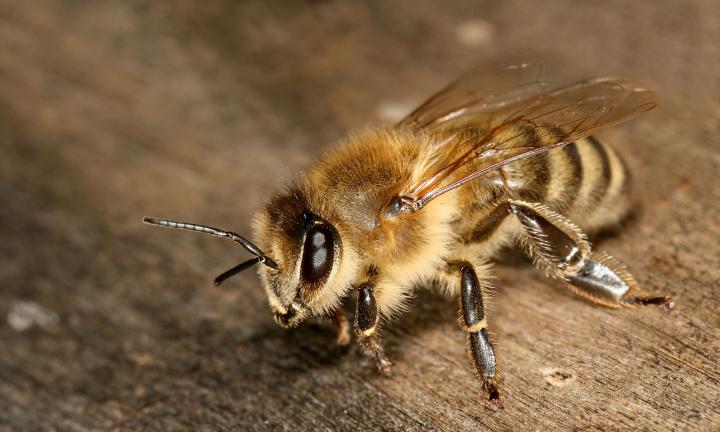
University of Colorado at Boulder
Honey bees use their wings to cool down their hives when temperatures rise, but new University of Colorado Boulder research shows that this intriguing behavior may be linked to both the rate of heating and the size of a honey bee group.
The findings, which were recently published in the journal Animal Behaviour, indicate that honey bees anticipate and react to rapid temperature increases sooner than they do when the increase is gradual — but only when the bees are clustered in groups of 10.
“Larger groups of bees seem to be better than individuals or small groups at cuing in on how quickly an environment is changing,” said Chelsea Cook, a doctoral researcher in the Department of Ecology and Evolutionary Biology at CU-Boulder and lead author of the study.
The research may have implications for future studies on how self-organization and decentralized information gathering can influence biological and artificial environments alike.
Previous research has shown that honey bees fan their hives in order to maintain a stable temperature and protect the developing larvae inside. Larvae are vulnerable to death or deformation if temperatures exceed 96.8 degrees Fahrenheit.
Due to the decentralized nature of insect collectives, however, no authority figure tells the bees when to start fanning or for how long. Researchers have repeatedly observed that bees initiate fanning simultaneously rather than independently, though the exact mechanisms of this timing remain unknown.
When the researchers heated up groups of bees at different rates, they found that the bees began fanning sooner when temperatures rose by 3.6 degrees Fahrenheit per minute versus a more gradual increase.
Individual bees and small clusters of three bees did not begin fanning as quickly. Only in larger groups of 10 did the bees act quickly to address the rising temperatures.
The results suggest that large decentralized groups are better than individuals at assessing and reacting to rapid changes because each member can gather distinct localized information, allowing for a more effective response.
“Much like a large office building with one central thermostat, systems are often built with the assumption that every unit is the same whereas in reality, units are diverse,” said Cook. “Exploring self-organization structures on a biological level can help us improve hypotheses, predictions and models.”